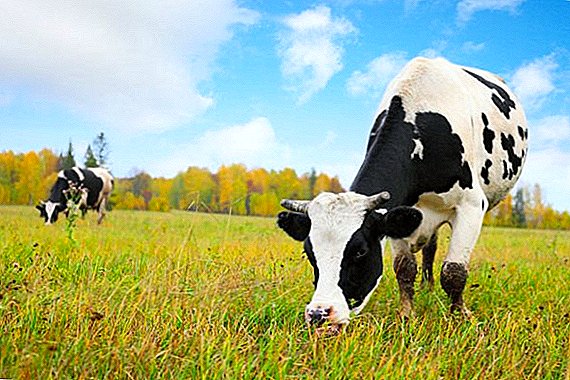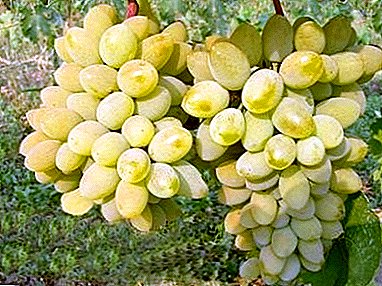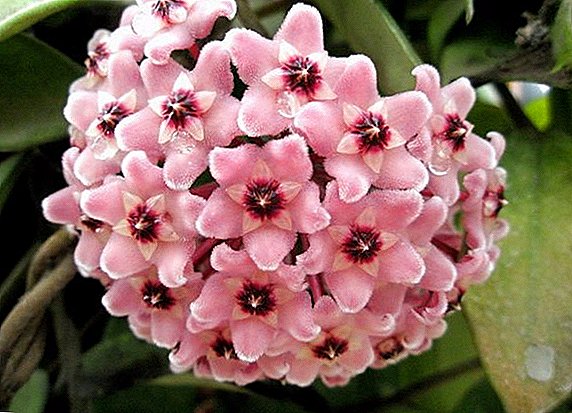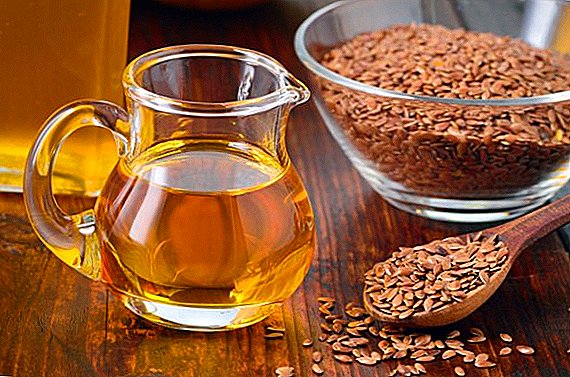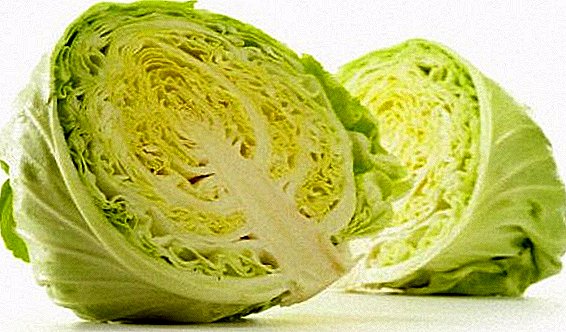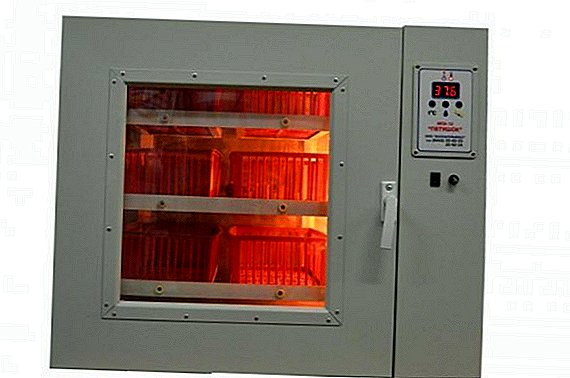 A quality incubator simplifies and improves the work of poultry farmers in breeding young offspring. By resorting to his help, you can be sure that the chickens will be hatching at the appropriate temperature and humidity, which means that the percentage of spitting will be high. Before you purchase a device for breeding chicks, you should consider several models, examining their characteristics, functionality and reviews. In our article you will find the most complete information about the incubator "Cockerel IPH-12."
A quality incubator simplifies and improves the work of poultry farmers in breeding young offspring. By resorting to his help, you can be sure that the chickens will be hatching at the appropriate temperature and humidity, which means that the percentage of spitting will be high. Before you purchase a device for breeding chicks, you should consider several models, examining their characteristics, functionality and reviews. In our article you will find the most complete information about the incubator "Cockerel IPH-12."
Description
The “Cockerel IPH-12” incubator is designed for breeding chicks of various species of birds - chickens, turkeys, geese, quails, guinea fowls and others. It is a rectangular container with a white metal case and panels of plastic and PSB-plates. In appearance, it looks like a safe. 
In front is a door with a handle and a large viewing window through which you can observe the process of incubation. On the door there is a control panel with a digital display.
Did you know? Primitive incubators were already made in Ancient Egypt over 3 thousand years ago. To heat the eggs, its inhabitants burned straw and other materials. In Europe and in America, the tradition to use devices for breeding young animals appeared in the XIX century. On the territory of Russia, they began to be used in the first half of the 20th century.
At the top of the container there are openings through which air enters it. The device includes 6 trays, in which the incubation material is placed, as well as 1 tray for hatching chicks. Thus, using this incubation device you can not only incubate eggs, but also hatch young.
The device is made of high quality, wear-resistant materials, so that users note its durability and reliability. According to the manufacturers, the device can serve 8 years. The device was manufactured in Russia at Volgaselmash LLC. It is recommended for use in homestead farms.
Choose the right incubator for your home.
Specifications
The device operates from the mains with a voltage of 50 Hz, 220 watts. Power consumption - 180 watts. The power of the heating elements - 150 watts. Heating is carried out with halogen lamps. 
Dimensions of the device:
- width - 66.5 cm;
- height - 56.5 cm;
- depth - 45.5 cm
Production characteristics
The device is designed for laying 120 chicken eggs. Each tray holds 20 pieces. Duck eggs can be placed 73 pieces, goose - 35, quail - 194. The device is equipped only with trays for chicken eggs. If you plan to incubate eggs of other species of birds, you will need to purchase special trays.
Important! Eggs of different bird species should not be placed in the incubator at the same time, since each of them requires different temperature and humidity, as well as the duration of incubation. For example, for chicken eggs, 21 days of incubation will be required, for duck eggs and turkeys - 28 days, quails - 17.
Incubator Functionality
The “IPX-12” incubator is equipped with an automatic coup system, which can be adjusted using the “Up” and “Down” buttons. A coup occurs every hour. However, the manufacturer warns that there may be a delay of 10 minutes. Temperature and humidity parameters are set automatically. The device is equipped with digital sensors. Parameters can be controlled by the user.  The accuracy of automatic temperature maintenance is 0.001 °. In addition to trays for eggs and chicks, inside the incubator is also a tray for pouring water. When it evaporates, the apparatus maintains the required level of humidity. Also, the device has a fan that removes unnecessary carbon dioxide and evenly distributes heat.
The accuracy of automatic temperature maintenance is 0.001 °. In addition to trays for eggs and chicks, inside the incubator is also a tray for pouring water. When it evaporates, the apparatus maintains the required level of humidity. Also, the device has a fan that removes unnecessary carbon dioxide and evenly distributes heat.
Advantages and disadvantages
The device is very simple and easy to use, therefore it has a number of advantages:
- good yield of young animals;
- reliability;
- quality and strength of materials;
- convenience when using;
- automatic systems of coup, maintaining temperature and humidity;
- large viewing window;
- universality - the possibility of incubating eggs and breeding young animals.
Did you know? It is known that sometimes chickens bring eggs with 2 yolks. However, in 1971 in the USA and in 1977 in the USSR birds of the breed "Leggorn" laid eggs, in which there were 9 yolks.
Instructions for the use of equipment
Before turning on the device, it is necessary to read to the end of the instructions for use, which comes in the kit. As practice shows, the most frequent causes of malfunctions, improper operation or deterioration of the incubation material are careless or erroneous manipulations of the owner of the incubator during its operation. 
Preparing the incubator for work
The preparatory stage of breeding young animals involves 2 stages:
- Preparing eggs for incubation.
- Preparation of the incubator for operation.
If they are normal, then the incubation material can be put into the machine. The incubator is placed in a room where the air temperature is not lower than + 15 ° С and not higher than + 35 ° С. It is necessary to check that it is not located near heating, heating devices, open fire, sunlight, drafts.
Undoubtedly, the percentage of hatchability of chicks will depend on the quality of the incubation material and compliance with the necessary conditions during incubation. Only fresh chicken or quail eggs are taken to the incubator, which were saved for no more than 6 days in dark conditions at a temperature of + 8-12 ° С and humidity of 75-80%.
Turkey and goose eggs are allowed to be stored for up to 8 days. With longer storage, the chances of spitting healthy chicks will decrease. So, if chicken eggs are stored for 5 days, then 91.7% of babies may appear from them.
Find out what are the subtleties of incubating eggs of chickens, goslings, poults, ducks, turkeys, quails.
If the shelf life of the incubation material is extended by another 5 days, then 82.3% of the chicks will appear from it. Before placing the eggs in the incubator, they are culled and disinfected. Eggs need to choose medium size, it is better not to take large or small ones. For chicken eggs, the average weight is from 56 to 63 g. It is necessary to discard the incubation material, on the shell of which there are stains, damage, dirt. After examining the appearance go to the study of the inside of the egg. To do this, it appears through the ovoskop. 
At this stage, the incubation material is rejected, having:
- heterogeneous shell, with too thick or thin sections;
- without clear identification of the airbag at the blunt end;
- the location of the yolk is not centered, but at the blunt or sharp end;
- with a quick movement of the yolk when turning the eggs.
Important! Since the incubation material is loaded into an already heated apparatus, some time before the laying it should be moved from the cool place where it was kept to room conditions. If it is placed cold, the shell may be damaged.
Egg laying
Since the “IPH-12 Cockerel” incubator is equipped with an automatic egg reversal system, the incubation material is placed in it with a blunt end up. Experienced poultry farmers recommend placing eggs in an incubation apparatus in the evening from 5 to 10 o'clock. In this case, the chicks will be born during the day.
When placing the incubation material, the air temperature in the middle of it should be at + 25 ° C. 2 hours after the laying, it should be gradually increased to 30 ° C and then to 37-38 ° C. 
Incubation
Different species of birds incubation takes place in different ways and lasts for different times. For example, in chickens, it is divided into 4 periods, during which it will be necessary to change the temperature and humidity parameters. So, in the first week after laying the temperature in the incubator should be maintained at around 38 ° C, humidity - from 60 to 70%. You must ensure that the water tray is always full.
At the end of the first week, for 4 days, the temperature will need to be reduced to 37.5 ° C, and the humidity - to 50%. From the 12th day of incubation and until the first squeak of chicks is heard, the temperature will need to be reduced by another 0.2 ° and the humidity raised to 70-80%. From the moment of the first squeaking and before the spitting, the temperature should be lowered to 37.2 ° С, and the humidity should be set at 78-80%.
Important! Do not completely rely on the work of even the best automatic incubator. To avoid unfortunate consequences, parameters should be monitored every 8 hours.
In the final period, the turning mechanism is placed in a vertical position, since from this moment the eggs are no longer turned over. The incubator is opened daily for airing 2 times for 5 minutes at the same time. This is necessary in order to remove the carbon dioxide that comes out when chicks breathe. 
Chick pecking
Chickens, as a rule, are born on the 20-21st day. There may be a slight delay of 1-2 days. After pecking, they are culled, leaving healthy and strong, and kept for some time in the incubator so that they dry out.
Device price
The IPH-12 incubator can be bought for 26.5-28.5 thousand rubles or 470-505 dollars, 12.3-13.3 thousand hryvnias.
Read also about the features of such incubators as: "Blitz", "Universal-55", "Layer", "Cinderella", "Stimulus-1000", "IFH 500", "Remil 550TsD", "Ryabushka 130", "Egger 264 "," Perfect hen ".
findings
Household incubator "IPH-12" has a simple automation, easy to use. Users note that they have no problems in working with him thanks to an accessible interface. This is a universal device that allows both to incubate and hatch young. It has several advantages, such as good capacity, quality of materials, excellent functional characteristics, automatic egg flipping and maintaining humidity and temperature indicators. Its functionality and economy makes it possible to get young birds with the smallest financial investment in electricity.  Before using it, it is important to read the instructions and follow all recommendations for use. Among the problems that may arise in the operation of the device are the blown fuse, which causes the fan or the thermostat not to work, faults in the electrical circuit, which can cause uneven heating, breakage of the gear, which is responsible for turning the eggs, and others. That the device served longer, after each session it should be washed and disinfected.
Before using it, it is important to read the instructions and follow all recommendations for use. Among the problems that may arise in the operation of the device are the blown fuse, which causes the fan or the thermostat not to work, faults in the electrical circuit, which can cause uneven heating, breakage of the gear, which is responsible for turning the eggs, and others. That the device served longer, after each session it should be washed and disinfected.


